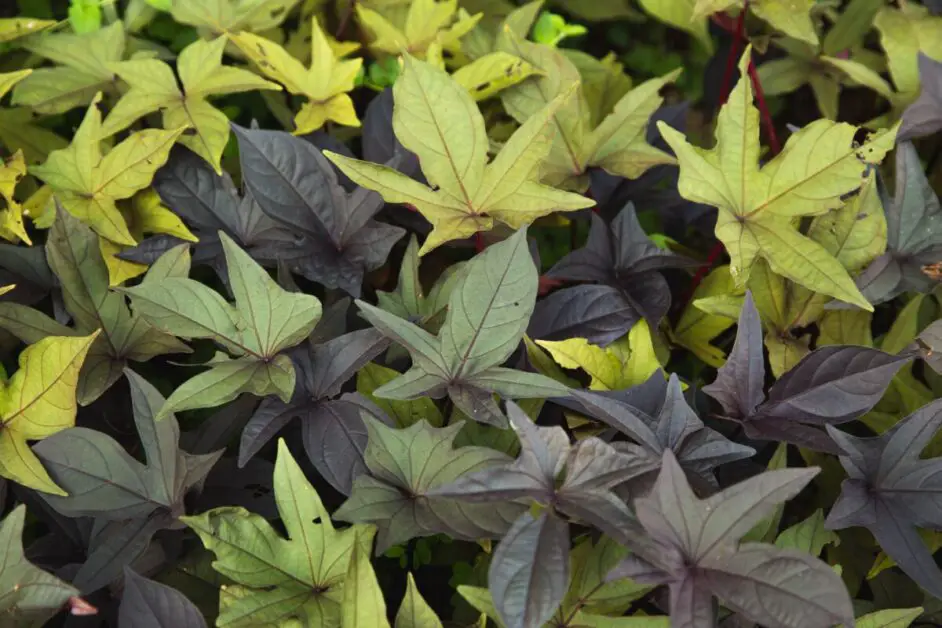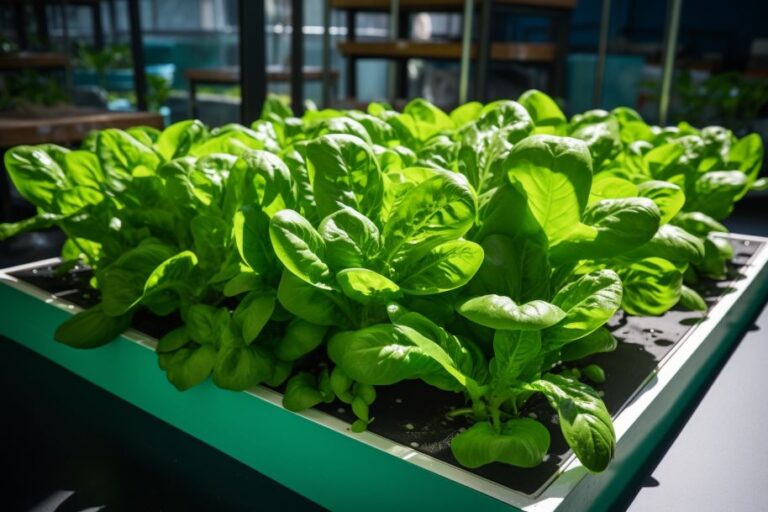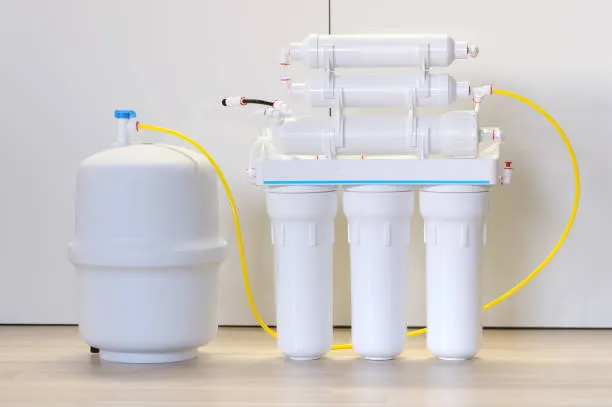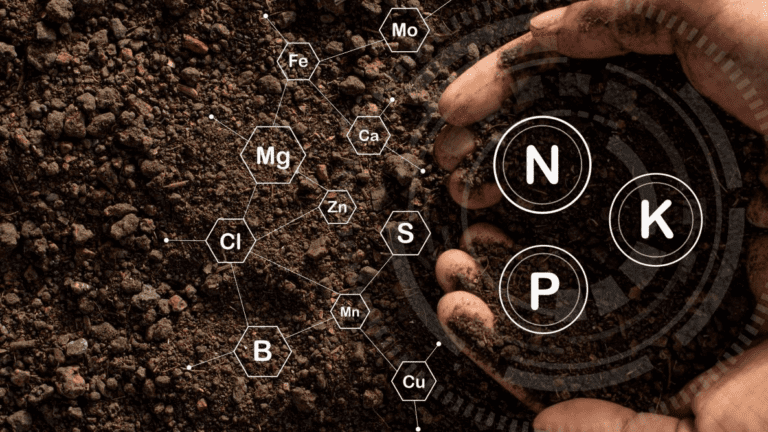How to Grow Hydroponic Plants in Any Climate: A Practical Guide
Table of Contents
Setting the Stage: Understanding the Basics of Hydroponics
Hydroponics is a revolutionary method of gardening that eliminates the need for soil and relies on a nutrient-rich water solution to nourish plants. This technique has gained popularity due to its numerous advantages, including increased crop yields, efficient use of resources, and the ability to grow plants in limited spaces. Understanding the basics of hydroponics is fundamental for gardening enthusiasts who wish to explore this innovative and sustainable approach to cultivation.
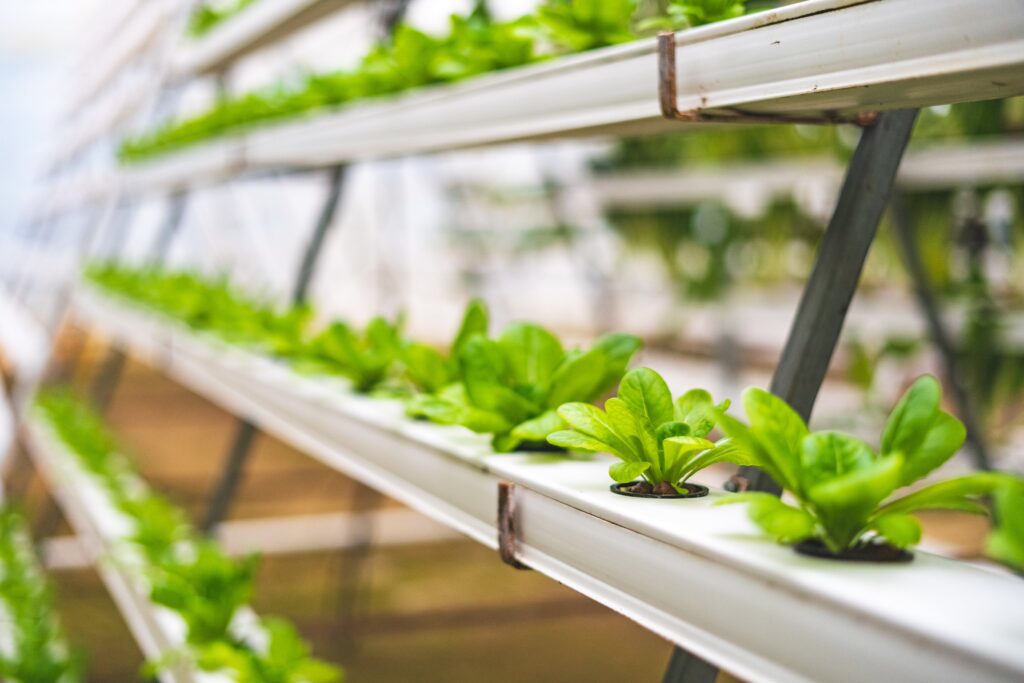
At its core, hydroponics involves growing plants in a controlled environment where key variables like temperature, humidity, light, and nutrient levels can be carefully regulated. By creating an optimal growing environment, hydroponic systems provide plants with all the essential elements they need to thrive. This leads to faster growth rates and healthier plants that produce higher yields compared to traditional soil-based gardening. So, whether you have limited space for a garden or you want to maximize crop production, mastering the basics of hydroponics is an important first step toward successfully implementing this method.
• Hydroponics is a revolutionary method of gardening that eliminates the need for soil and relies on a nutrient-rich water solution to nourish plants.
• This technique has gained popularity due to its numerous advantages, including increased crop yields, efficient use of resources, and the ability to grow plants in limited spaces.
• Understanding the basics of hydroponics is fundamental for gardening enthusiasts who wish to explore this innovative and sustainable approach to cultivation.
• At its core, hydroponics involves growing plants in a controlled environment where key variables like temperature, humidity, light, and nutrient levels can be carefully regulated.
• By creating an optimal growing environment, hydroponic systems provide plants with all the essential elements they need to thrive.
• This leads to faster growth rates and healthier plants that produce higher yields compared to traditional soil-based gardening.
• Whether you have limited space for a garden or you want to maximize crop production, mastering the basics of hydroponics is an important first step toward successfully implementing this method.
Selecting Suitable Hydroponic Systems for Different Climates
When it comes to selecting suitable hydroponic systems for different climates, it is crucial to consider the specific needs of your plants and the environmental conditions they will be exposed to. Different climates require different considerations in terms of temperature, humidity, and sunlight, and choosing the right system will ensure optimal plant growth and yield.
In hotter climates, where temperatures can soar, it is essential to select a hydroponic system that provides adequate cooling and ventilation. Systems such as deep water culture or nutrient film technique, which utilize water as a medium for plant growth, can help to regulate temperature by dissipating heat. Additionally, incorporating shade structures or using reflective materials around the growing area can help protect plants from excessive sunlight and heat stress.
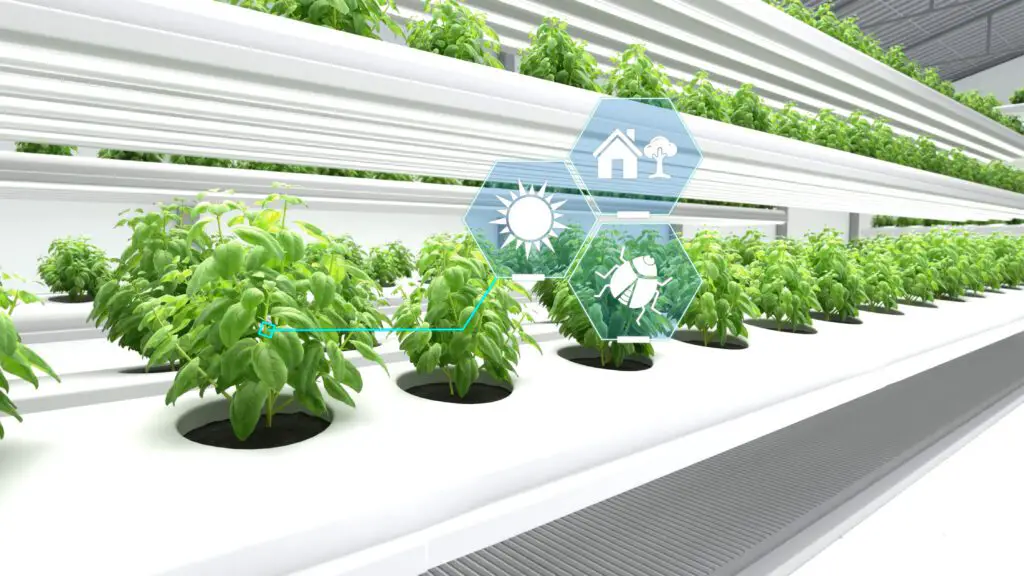
On the other hand, in colder climates, where temperatures can drop significantly, it is important to choose a hydroponic system that offers insulation and heating capabilities. Systems like ebb and flow or aeroponics, which use mist or nutrient-rich water for plant growth, can help maintain a stable temperature by providing warmth to the roots. Installing heaters or utilizing greenhouse technology can also help to create a controlled environment for optimal plant growth.
By carefully considering the climate conditions and selecting a hydroponic system that addresses the specific challenges posed by the environment, gardening enthusiasts can create thriving, productive hydroponic gardens irrespective of their local climate. The next step is to ensure the right temperature and humidity levels for hydroponic plants, which will be discussed in the following section.
• In hotter climates, choose hydroponic systems that provide cooling and ventilation
– Deep water culture or nutrient film technique can help regulate temperature by dissipating heat
– Incorporate shade structures or use reflective materials to protect plants from excessive sunlight and heat stress
• In colder climates, select hydroponic systems with insulation and heating capabilities
– Ebb and flow or aeroponics systems can maintain a stable temperature by providing warmth to the roots
– Install heaters or utilize greenhouse technology for a controlled environment
• Consider the specific challenges posed by the climate when selecting a hydroponic system
– Addressing these challenges will ensure optimal plant growth and yield
– Create thriving, productive hydroponic gardens regardless of local climate
Next section: Ensuring the right temperature and humidity levels for hydroponic plants.
Ensuring Optimal Temperature and Humidity Levels for Hydroponic Plants
Maintaining proper temperature and humidity levels is crucial for the success of hydroponic plants. The ideal temperature range for most hydroponic plants is between 65°F to 80°F (18°C to 27°C), with some plants tolerating slightly higher or lower temperatures. A controlled environment is key to ensure that the plants thrive, regardless of the outdoor conditions.
High humidity is generally favorable for hydroponic plants, as it helps prevent excessive moisture loss through the leaves. Aim for a humidity level between 50% to 70% for optimal growth. However, be cautious of maintaining excessively high humidity levels, as this can lead to the growth of mold and other harmful pathogens.
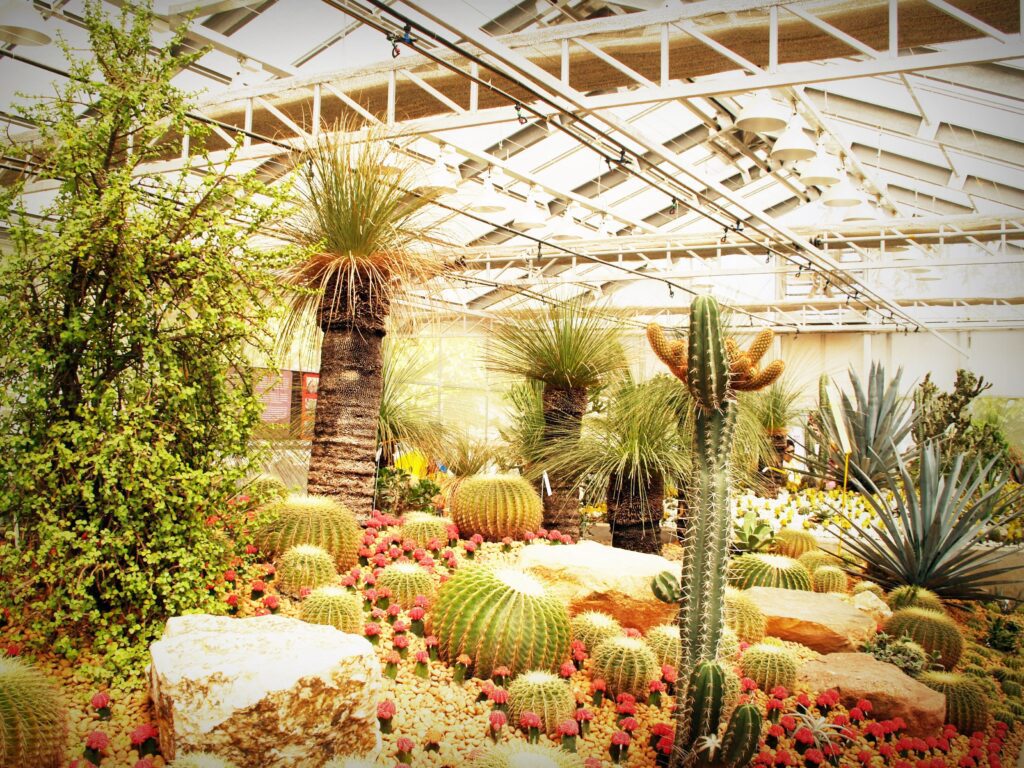
To achieve optimal temperature and humidity levels, consider utilizing a combination of heating and cooling systems, as well as humidifiers and dehumidifiers. Monitor the temperature and humidity regularly using a reliable thermometer and hygrometer, making adjustments as necessary to maintain the desired range. Additionally, ensure proper air circulation within the hydroponic system to prevent stagnant air and potential issues like mold growth.
By maintaining optimal temperature and humidity levels, you provide your hydroponic plants with the ideal environment for healthy growth and abundant harvests. Remember to regularly monitor and adjust these factors to ensure the best possible conditions for your plants’ success.
• The ideal temperature range for most hydroponic plants is between 65°F to 80°F (18°C to 27°C)
• Some plants may tolerate slightly higher or lower temperatures
• A controlled environment is key to the success of hydroponic plants
• High humidity levels help prevent excessive moisture loss through the leaves
• Aim for a humidity level between 50% to 70% for optimal growth
• Excessively high humidity can lead to mold and harmful pathogens
• Utilize a combination of heating and cooling systems, as well as humidifiers and dehumidifiers, to achieve optimal levels
• Regularly monitor temperature and humidity using reliable thermometers and hygrometers
• Make adjustments as necessary to maintain desired ranges
• Ensure proper air circulation within the hydroponic system
• Stagnant air can lead to issues like mold growth
• Maintaining optimal temperature and humidity levels creates an ideal environment for healthy plant growth
• Regular monitoring and adjustment are essential for continued success.
Lighting Essentials: Providing Adequate Light for Indoor Hydroponic Gardens
Lighting is a crucial aspect of indoor hydroponic gardens as it directly influences the growth and productivity of plants. To provide adequate light for optimal plant development, it is important to understand the different types of light and their effects on plants.
One of the primary factors to consider when selecting lighting for indoor hydroponic gardens is the light intensity. Plants require a certain amount of light intensity for photosynthesis, which is the process by which they convert light energy into chemical energy for growth. Different plant species have varying light intensity requirements, and it is essential to match the lighting intensity to the specific needs of the plants being grown. By monitoring and adjusting the light intensity, gardeners can ensure that plants receive the appropriate amount of light for healthy and vigorous growth.
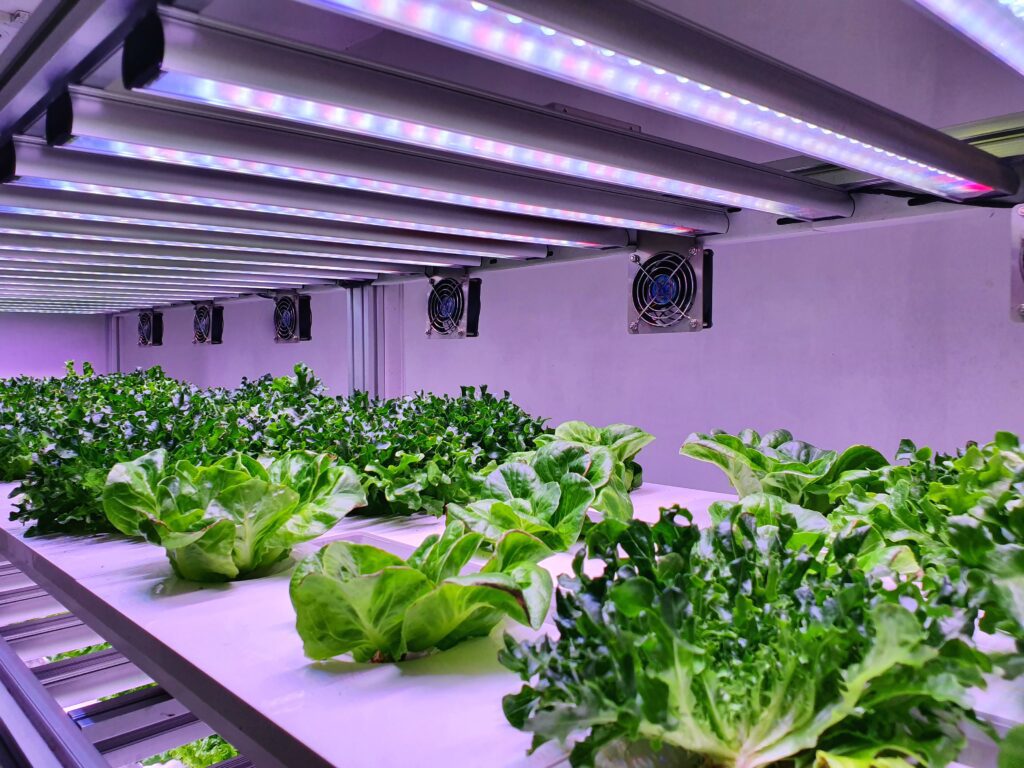
Another critical aspect of lighting in indoor hydroponic gardens is the light spectrum. Different wavelengths of light have distinct effects on plant growth and development. Blue light, for example, is beneficial for promoting leafy growth, while red light stimulates flowering and fruiting. By providing a combination of blue and red light, gardeners can encourage balanced growth and maximize the productivity of their plants. Additionally, the use of full-spectrum LED lights is becoming increasingly popular as they mimic natural sunlight and provide a wide range of wavelengths that are beneficial for plant growth.
In conclusion, lighting is an essential consideration when it comes to setting up indoor hydroponic gardens. By understanding the importance of light intensity and spectrum, gardeners can ensure that their plants receive the optimal lighting conditions for healthy and productive growth.
• Light intensity is a crucial factor in indoor hydroponic gardens as it directly affects plant growth and productivity.
• Plants require a certain amount of light intensity for photosynthesis, the process by which they convert light energy into chemical energy for growth.
• Different plant species have varying light intensity requirements, so it’s important to match the lighting intensity to their specific needs.
• Monitoring and adjusting the light intensity helps ensure that plants receive the appropriate amount of light for healthy growth.
• The light spectrum is another critical aspect of lighting in indoor hydroponic gardens.
• Different wavelengths of light have distinct effects on plant growth and development.
• Blue light promotes leafy growth, while red light stimulates flowering and fruiting.
• Providing a combination of blue and red lights encourages balanced growth and maximizes productivity.
• Full-spectrum LED lights are increasingly popular as they mimic natural sunlight and provide a wide range of beneficial wavelengths.
Water Matters: Maintaining Proper pH and Nutrient Levels in Hydroponic Systems
Maintaining proper pH and nutrient levels in hydroponic systems is crucial for the successful growth and development of plants. In hydroponics, plants rely on nutrient-rich water for their survival instead of growing in soil. This means that as gardeners, we must pay close attention to the composition of the water we provide.
pH is a measure of the acidity or alkalinity of a solution, and it plays a significant role in nutrient uptake by plants. Most plants prefer a slightly acidic pH level, around 5.5 to 6.5. This range allows for optimal nutrient availability and absorption. By regularly monitoring and adjusting the pH of the water in our hydroponic systems, we can ensure that our plants can access and utilize the essential nutrients they need to thrive.

Nutrients are vital for plant growth, and in hydroponics, they are directly dissolved in the water to create a nutrient solution. This solution contains all the necessary elements that plants need, such as nitrogen, phosphorus, potassium, and micronutrients like calcium, magnesium, and iron. However, it’s important to note that different plant species have varying nutrient requirements. Understanding the specific needs of the plants we are growing allows us to tailor the nutrient solution accordingly, providing an optimal balance of nutrients for their growth. Monitoring the nutrient levels through regular testing and adjusting the solution as needed ensures that our plants receive the appropriate nutrients at all stages of their growth cycle.
By maintaining proper pH and nutrient levels in our hydroponic systems, we are setting the stage for healthy and vigorous plant growth. However, it’s crucial to remember that these levels may vary depending on the type of plant and the specific growing conditions. As gardeners, our role is to closely observe our plants’ response to the nutrient solution and make necessary adjustments to achieve and maintain an ideal growing environment. With careful attention to water matters, we pave the way for successful hydroponic gardening.
• pH is a crucial factor in nutrient uptake by plants
• Most plants prefer a slightly acidic pH level of 5.5 to 6.5
• Regularly monitoring and adjusting the pH ensures optimal nutrient availability for plants
• Nutrients are dissolved in water to create a nutrient solution in hydroponics
• Different plant species have varying nutrient requirements
• Tailoring the nutrient solution based on specific plant needs promotes healthy growth
• Regular testing and adjustment of nutrient levels ensure appropriate nutrition at all growth stages
• Maintaining proper pH and nutrient levels sets the stage for healthy and vigorous plant growth
• Levels may vary depending on plant type and growing conditions
• Observing plants’ response to the nutrient solution allows for necessary adjustments
Choosing the Right Growing Medium for Hydroponic Plants
When it comes to hydroponic gardening, selecting the right growing medium for your plants is key to their success. The growing medium serves as a substitute for soil, providing support, hydration, and nutrient absorption. There are various options available, each with its advantages and considerations.
One commonly used growing medium is Rockwool, which is made from melted basalt rock and spun into fibers. It offers excellent water retention and aeration, promoting healthy root development. Another popular choice is perlite, a lightweight material consisting of volcanic glass that retains moisture while also providing good drainage. Coco coir, derived from coconut husks, is another option that boasts excellent water retention and aeration properties, as well as natural disease resistance.
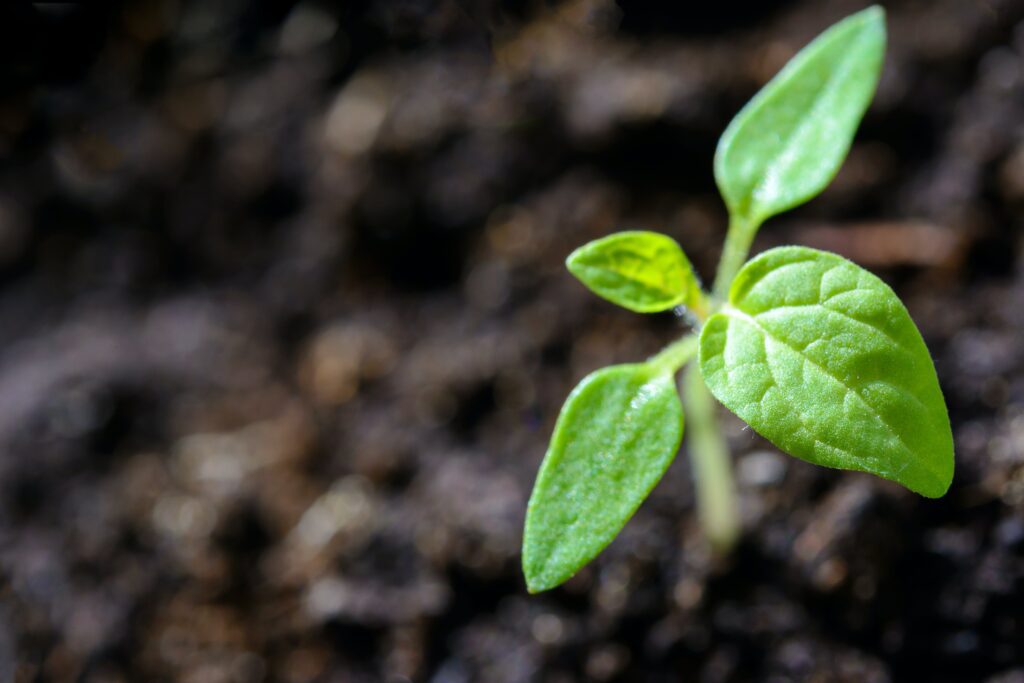
Each growing medium has its unique characteristics and benefits, so it is important to consider the specific needs of your plants and the requirements of your hydroponic system. By choosing the right growing medium, you can provide an optimal environment for your plants to thrive and achieve impressive yields.
• Rockwool: made from melted basalt rock and spun into fibers, offers excellent water retention and aeration, promotes healthy root development
• Perlite: lightweight material consisting of volcanic glass, retains moisture while providing good drainage
• Coco coir: derived from coconut husks, boasts excellent water retention and aeration properties, natural disease resistance
• Consider the specific needs of your plants and the requirements of your hydroponic system when choosing a growing medium
• Choosing the right growing medium can provide an optimal environment for your plants to thrive and achieve impressive yields.
Seeds or Seedlings? Starting Your Hydroponic Garden
Starting a hydroponic garden can be an exciting endeavor, and one of the first decisions you’ll need to make is whether to start with seeds or seedlings. Both options have their advantages and considerations, so let’s examine each to help you make an informed decision.
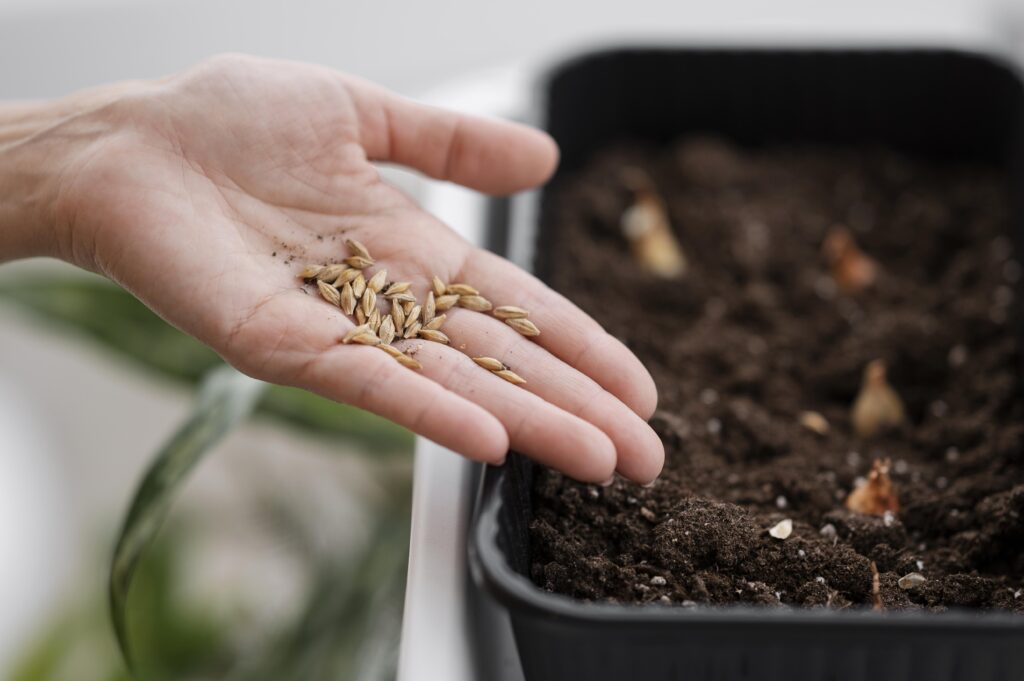
Seeds offer a wide variety of choices and can be more cost-effective. They also provide the opportunity to witness the entire growth cycle of a plant, from germination to harvest. However, it’s important to note that growing plants from seeds requires patience and attention to detail. Factors such as temperature, light exposure, and humidity must be carefully controlled to ensure successful germination. Additionally, some plant species may have specific germination requirements, such as exposure to light or scarification, which involves breaking or weakening the outer coat of the seed to aid in germination. Therefore, if you are a beginner or looking for a more straightforward start, seedlings might be a better option.
• Seedlings offer a more convenient and time-saving option for beginners or those looking for a quicker start.
• With seedlings, you can skip the germination stage and directly focus on nurturing the plants to maturity.
• They are already established plants with developed root systems, making them less vulnerable to environmental fluctuations.
• Seedlings also provide a higher success rate compared to starting from seeds, as they have already passed the delicate early stages of growth.
• By choosing seedlings, you can have a head start in your hydroponic garden and enjoy faster harvest times.
• However, it’s important to note that purchasing seedlings may be more expensive than buying seeds.
Transplanting Seedlings into Hydroponic Systems
When it comes to transplanting seedlings into hydroponic systems, there are a few key considerations to keep in mind. First and foremost, it is important to ensure that the seedlings are at the appropriate stage of growth before transplanting. Ideally, seedlings should have developed a strong root system and at least two to four true leaves. This ensures that they can withstand the transition and thrive in the hydroponic environment.
Before transplanting, it is also crucial to prepare the hydroponic system and the growing medium. The system should be thoroughly cleaned and any debris or contaminants should be removed. This helps to prevent the spread of diseases and ensures the best possible growing conditions for the seedlings. Additionally, the growing medium should be adequately moistened to provide a stable and supportive environment for the seedlings.
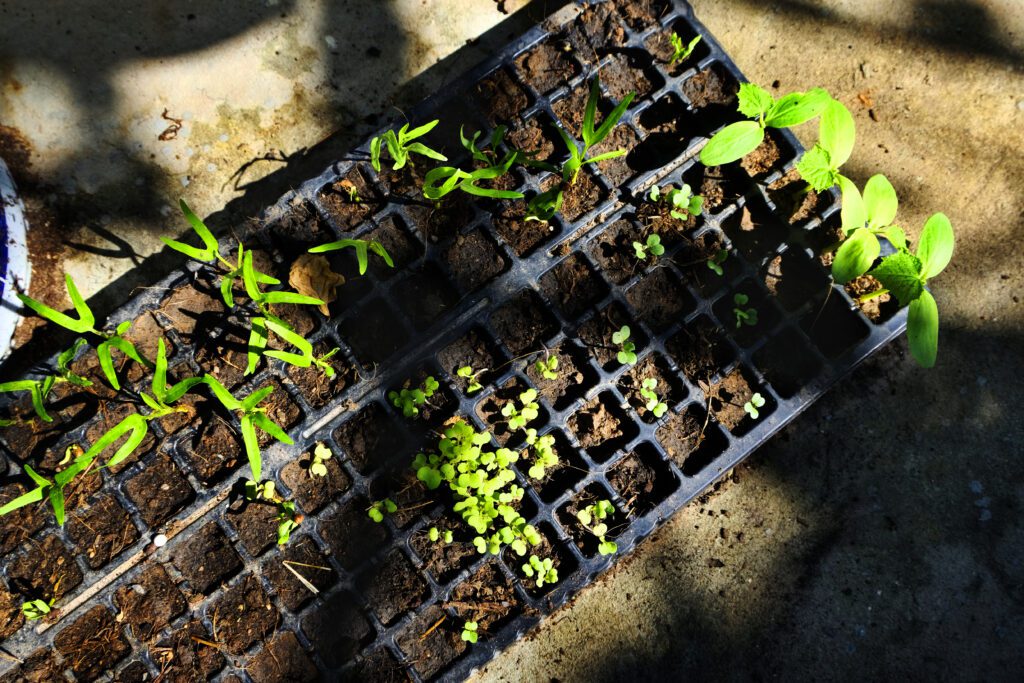
Once the system and growing medium are prepared, carefully remove the seedlings from their original containers, being cautious not to damage the roots. Gently separate any tangled or bound roots, as this promotes proper nutrient uptake and prevents nutrient deficiencies. Place the seedlings into the hydroponic system, ensuring that the roots are fully submerged in the nutrient solution or supported by the growing medium. Avoid overcrowding the system, as this can hinder air circulation and potentially lead to disease or stunted growth.
By following these guidelines, transplanting seedlings into hydroponic systems can be a successful and rewarding process. With proper care and attention, these young plants have the potential to thrive and produce bountiful harvests in the hydroponic environment. So, take the time to properly prepare the system and the seedlings, and watch as your hydroponic garden flourishes.
• Ensure seedlings are at appropriate stage of growth before transplanting
• Seedlings should have a strong root system and 2-4 true leaves
• Prepare hydroponic system and growing medium before transplanting
• Clean the system thoroughly and remove any debris or contaminants
• Moisten growing medium to provide a stable environment for seedlings
• Carefully remove seedlings from original containers, being cautious not to damage roots
• Separate tangled or bound roots to promote proper nutrient uptake
• Place seedlings into a hydroponic system, ensuring roots are submerged in nutrient solution or supported by growing medium
• Avoid overcrowding the system to prevent hindered air circulation
• With proper care, young plants can thrive in a hydroponic environment and produce bountiful harvests.
Nutrient Solutions: Formulating the Perfect Recipe for Plant Growth
Nutrient solutions are a fundamental aspect of hydroponic systems, as they provide plants with the essential elements they need for optimal growth and development. Formulating the perfect recipe for plant growth requires careful consideration of the specific nutrient requirements of different crops. It is crucial to understand the role of each nutrient and their ratios in promoting healthy plant growth.
To create an effective nutrient solution, it is essential to analyze the specific needs of the plants you are growing. Different plants have different nutrient requirements, so it is crucial to determine the ideal balance of macronutrients (such as nitrogen, phosphorus, and potassium) and micronutrients (such as iron, manganese, and zinc) for your chosen crops. Conducting soil tests or using nutrient deficiency symptom guides can help identify any nutrient imbalances or deficiencies.
Once the nutrient requirements are identified, they can be incorporated into a formula to create a customized nutrient solution. There are various commercial nutrient mixes available on the market, but many hydroponic gardeners prefer to formulate their solutions to have better control over nutrient content and ensure optimal plant health. This allows for precise adjustments tailored to the specific needs of your plants, taking into account factors like stage of growth and climatic conditions.
Remember, achieving the perfect nutrient recipe is an ongoing process that requires consistent monitoring and adjustment. Regularly test the pH and electrical conductivity (EC) levels of the nutrient solution to ensure they are within the appropriate range for your crops. pH levels affect nutrient availability, and EC levels indicate the nutrient concentration in the solution. Monitoring these levels allows for timely adjustments to maintain the optimal growing environment. Additionally, periodic analysis of plant tissue samples can provide valuable insights into nutrient uptake and any deficiencies or excesses.
• Nutrient solutions are essential for hydroponic systems, providing plants with the necessary elements
• Careful consideration of specific nutrient requirements is crucial for formulating the perfect recipe
• Understanding the role and ratios of each nutrient promotes healthy plant growth
• Analyze the specific needs of your plants to determine the ideal macronutrient and micronutrient balance
• Conduct soil tests or use deficiency symptom guides to identify imbalances or deficiencies
• Incorporate identified nutrient requirements into a customized formula for a tailored solution
• Many hydroponic gardeners prefer formulating their solutions for better control over nutrient content
and plant health.
• Regularly test pH and EC levels in the nutrient solution to maintain appropriate range
for crops.
• Adjustments should be made based on monitoring these levels.
• Periodically analyze plant tissue samples to gain insights into uptake, deficiencies, or excesses.
Feeding Your Plants: Understanding Nutrient Delivery Methods in Hydroponics
Nutrient delivery is a critical aspect of hydroponic gardening, as it directly affects the growth and development of plants. In hydroponic systems, plants don’t have access to conventional soil, which contains natural nutrients. Therefore, it is essential to provide the necessary elements for their healthy growth through nutrient solutions.
There are several nutrient delivery methods commonly used in hydroponics, each with its advantages and considerations. The most widely used methods include the drip system, the ebb and flow system, and the nutrient film technique (NFT).
The drip system is a popular choice due to its simplicity and effectiveness. Nutrient solutions are continuously dripped directly onto the plant’s root system through small tubes. This method allows for precise control over nutrient delivery and is suitable for a wide range of plant varieties. Another commonly used method is the ebb and flow system, where plants are periodically flooded with nutrient solution and then drained. This cyclic approach ensures that plants receive an adequate supply of nutrients while preventing waterlogging. Lastly, the nutrient film technique involves a thin film of nutrient solution flowing continuously over the plant’s roots, ensuring a constant supply of nutrients. This method is particularly effective for fast-growing plants with shallow root systems.
When selecting a nutrient delivery method, it is crucial to consider the specific needs of your plants, the size of your hydroponic system, and your preferences and expertise. By understanding the different methods available, you can make an informed decision that will optimize nutrient delivery and promote healthy and vigorous plant growth in your hydroponic garden.
• Nutrient delivery is critical for the growth and development of plants in hydroponic gardening.
• In hydroponic systems, plants lack access to natural nutrients found in conventional soil.
• Nutrient solutions are used to provide necessary elements for healthy plant growth.
• The drip system is a popular method that involves continuously dripping nutrient solutions onto the plant’s root system through small tubes.
• The drip system allows for precise control over nutrient delivery and works well with various plant varieties.
• The ebb and flow system periodically floods plants with a nutrient solution before draining it, ensuring adequate nutrient supply while preventing waterlogging.
• The nutrient film technique involves a thin film of nutrient solution flowing continuously over the roots, providing a constant supply of nutrients.
• This method is ideal for fast-growing plants with shallow root systems.
• When choosing a nutrient delivery method, consider your specific plant needs, hydroponic system size, and personal preferences and expertise.
• Understanding different methods will help you make an informed decision to optimize nutrient delivery and promote healthy plant growth in your hydroponic garden.
Watering Techniques for Hydroponic Plants in Various Climates
Watering hydroponic plants is a crucial aspect of maintaining their health and ensuring optimal growth, regardless of the climate in which they are cultivated. Proper watering techniques are essential for delivering nutrients and moisture to the plant’s roots, as well as promoting strong root development. In various climates, different factors such as temperature, humidity, and evaporation rates must be taken into consideration to ensure that plants receive the right amount of water.
In arid or hot climates, water evaporates more quickly, leading to the risk of dehydration for hydroponic plants. To combat this, it is important to monitor the moisture levels in the growing medium regularly. One effective strategy is to use an automated irrigation system that is equipped with a timer and sensors to deliver water at specific intervals. This not only helps to maintain consistent moisture levels but also prevents the roots from becoming waterlogged. Additionally, using a moisture meter can provide accurate measurements of the water content in the growing medium, allowing for adjustments to watering frequencies as needed.
In contrast, in humid climates, excessive moisture can be a challenge for hydroponic plants. The high humidity levels can impede the plants’ ability to absorb oxygen, leading to root rot and other problems. To address this issue, it is crucial to ensure proper ventilation and airflow within the hydroponic system. This can be achieved by using fans or exhaust systems to circulate the air and prevent the buildup of excessive humidity. Furthermore, reducing the frequency of watering and allowing the growing medium to dry out slightly between watering cycles can help prevent moisture-related issues. Regular monitoring of humidity levels with a hygrometer is also recommended to maintain ideal conditions for plant growth.
By understanding the specific watering needs of hydroponic plants in different climates, gardeners can effectively manage moisture levels and promote healthy plant growth. Whether it’s adjusting watering frequencies in arid climates or mitigating excess moisture in humid environments, employing the appropriate watering techniques is integral to the success of any hydroponic garden.
• In arid or hot climates, water evaporates quickly and can lead to dehydration for hydroponic plants.
• Using an automated irrigation system with a timer and sensors can help maintain consistent moisture levels.
• Regular monitoring of moisture levels with a moisture meter allows for adjustments to watering frequencies as needed.
• Excessive moisture in humid climates can impede plant growth and cause root rot.
• Proper ventilation and airflow within the hydroponic system are crucial in humid climates.
• Fans or exhaust systems can be used to circulate air and prevent excessive humidity buildup.
• Allowing the growing medium to dry out slightly between watering cycles helps prevent moisture-related issues in humid environments.
• Regular monitoring of humidity levels with a hygrometer is recommended in humid climates.
Pest Management in Hydroponic Gardens: Prevention and Control Measures
Image via Pixabay
Preventing and controlling pests in hydroponic gardens is essential to ensuring the health and productivity of your plants. Without proper pest management, these small invaders can wreak havoc on your carefully cultivated crops, leading to stunted growth, reduced yields, and even plant mortality. In this section, we will explore effective prevention and control measures that will help you keep your hydroponic garden pest-free.
To begin with, one of the most crucial steps in pest prevention is maintaining a clean and sterile hydroponic system. Regularly sanitize your equipment, including containers, pumps, and growing mediums, to eliminate any potential breeding grounds for pests. Additionally, establish a disciplined routine of inspecting your plants for signs of infestation, such as discolored leaves, chewed foliage, or visible pests. Acting promptly at the first indication of a problem can prevent pests from multiplying and spreading throughout your garden.
When it comes to controlling pests in hydroponic systems, organic and natural methods are often the preferred choice. Beneficial insects like ladybugs and lacewings can be introduced into your garden to prey on common pests like aphids, mites, and thrips. Using biological controls not only helps maintain a balanced ecosystem in your garden but also reduces the need for chemical pesticides, minimizing the risk of negative impacts on the environment and the health of your plants.
In our next section, we will delve into strategies for monitoring and adjusting pH and EC levels in hydroponic systems, a critical aspect of maintaining optimal growing conditions for your plants. Stay tuned to learn how to achieve the perfect balance for successful hydroponic gardening!
• Regularly sanitize your hydroponic equipment to eliminate breeding grounds for pests
• Inspect plants for signs of infestation and act promptly at the first indication of a problem
• Introduce beneficial insects like ladybugs and lacewings to prey on common pests
• Use organic and natural methods to control pests, reducing the need for chemical pesticides
• Maintain a balanced ecosystem in your garden to minimize negative impacts on the environment and plant health
Monitoring and Adjusting pH and EC Levels in Hydroponic Systems
Maintaining the proper pH and EC levels in hydroponic systems is crucial for ensuring optimal plant growth and nutrient uptake. pH, or the measure of acidity or alkalinity, plays a fundamental role in nutrient availability to plants. Most hydroponic crops thrive in a slightly acidic pH range of 5.5 to 6.5, although specific requirements may vary depending on the plant species.
Regular monitoring of pH levels is essential to prevent nutrient deficiencies or toxicities that can hinder plant development. pH can be measured using pH test strips, digital meters, or colorimeters. When pH levels drift outside the desired range, corrective measures can be taken to adjust the acidity or alkalinity of the nutrient solution. To lower pH, you can add organic acids like phosphoric acid or use acidifying substances. Conversely, raising pH involves adding alkaline solutions or basic compounds such as potassium hydroxide.
The electrical conductivity (EC) of the nutrient solution, which measures the concentration of dissolved salts, is another important parameter to monitor in hydroponics. EC levels indicate nutrient strength and help ensure that plants receive an appropriate amount of essential minerals. Different crops have specific EC requirements, with most falling within a range of 1.2 to 2.4 mS/cm (millisiemens per centimeter).
To measure EC, specialized EC meters are used. If EC levels deviate from the target range, adjustments can be made by diluting the nutrient solution with water or by adding a concentrated nutrient solution until the desired EC value is achieved.
By regularly monitoring and adjusting pH and EC levels in hydroponic systems, gardeners can maintain a stable and controlled environment for plant growth. This proactive approach ensures that plants receive the optimal balance of nutrients needed for healthy development, resulting in higher yields and overall productivity in hydroponic gardens.
• Regular monitoring of pH levels is essential to prevent nutrient deficiencies or toxicities
• pH can be measured using pH test strips, digital meters, or colorimeters
• Corrective measures can be taken to adjust the acidity or alkalinity of the nutrient solution when pH levels drift outside the desired range
• Lowering pH involves adding organic acids like phosphoric acid or using acidifying substances
• Raising pH involves adding alkaline solutions or basic compounds such as potassium hydroxide
• The electrical conductivity (EC) of the nutrient solution is important to monitor in hydroponics
• EC levels indicate nutrient strength and ensure plants receive necessary minerals
• Different crops have specific EC requirements, typically falling within a range of 1.2 to 2.4 mS/cm
• Specialized EC meters are used to measure EC levels in hydroponic systems
• Adjustments can be made by diluting the nutrient solution with water or adding concentrated nutrients until the desired EC value is achieved
By regularly monitoring and adjusting these parameters, gardeners can:
– Maintain a stable and controlled environment for plant growth in hydroponic systems
– Ensure optimal balance of nutrients for healthy development
– Achieve higher yields and overall productivity in hydroponic gardens
Pruning and Training Techniques for Hydroponic Plants
Pruning and training techniques play a crucial role in optimizing plant growth and maximizing yields in hydroponic systems. By removing unnecessary or diseased plant parts and strategically manipulating the plant’s growth patterns, gardeners can create a more robust and productive garden. Pruning involves the selective removal of branches, shoots, or leaves, while training refers to guiding the plant’s growth in a specific direction or shape.
One key aspect of pruning in hydroponics is maintaining proper airflow and light penetration within the garden. By removing crowded or overlapping branches, growers can enhance air circulation, reducing the risk of fungal diseases and promoting healthier plant development. Additionally, strategic pruning can direct the plant’s energy towards essential areas, such as fruit-bearing branches, resulting in improved crop production. It is important to note that pruning techniques can vary depending on the type of plants grown, so it is essential to understand the specific requirements of each crop.
Training techniques, on the other hand, focus on controlling the plant’s growth pattern to optimize productivity and space utilization. Common training methods include trellising, where plants are supported by a lattice or framework, and the use of stakes or cages to guide vertical growth. Training not only helps to prevent foliage overcrowding but also allows for better light exposure to the leaves, leading to increased photosynthesis and improved overall growth. Furthermore, proper plant training can contribute to better fruit development, as it reduces shading and supports the weight of heavy harvests.
In conclusion, mastering pruning and training techniques is paramount for hydroponic gardeners seeking to maximize their yields and ensure robust plant growth. With an understanding of the specific requirements of each plant, gardeners can employ pruning and training methods that enhance airflow, light penetration, and overall plant development. By efficiently managing plant growth and directing energy towards essential areas, hydroponic enthusiasts can create thriving, productive gardens that showcase the immense potential of this innovative gardening method.
• Pruning and training techniques are essential for optimizing plant growth and maximizing yields in hydroponic systems.
• Pruning involves selectively removing branches, shoots, or leaves to maintain proper airflow and light penetration within the garden.
• Strategic pruning can direct the plant’s energy towards essential areas, such as fruit-bearing branches, resulting in improved crop production.
• Understanding the specific requirements of each crop is crucial for effective pruning techniques.
• Training techniques focus on controlling the plant’s growth pattern to optimize productivity and space utilization.
• Common training methods include trellising and using stakes or cages to guide vertical growth.
• Proper training helps prevent foliage overcrowding and allows for better light exposure to leaves, leading to increased photosynthesis and improved overall growth.
• Plant training also supports better fruit development by reducing shading and supporting heavy harvests.
Harvesting and Enjoying the Fruits of Your Hydroponic Gardening Efforts
Harvesting and enjoying the fruits of your hydroponic gardening efforts is a satisfying and rewarding experience. After weeks of carefully tending to your plants, you are now ready to reap the benefits of your hard work. But before you grab your shears and start cutting, there are a few important things to keep in mind.
Firstly, it is crucial to harvest your hydroponic plants at the right time. Each plant has its unique harvesting requirements, so be sure to research and understand the specific needs of your crops. For example, leafy greens like lettuce are best harvested when they reach a desired size, usually before they start to bolt or develop a bitter taste. On the other hand, fruits such as tomatoes and peppers should be picked when they are fully ripened for the best flavor and nutritional value.
Secondly, handling techniques are crucial to preserve the quality and freshness of your harvest. When harvesting, use clean cutting tools to avoid contamination and damage to the plants. Remember to handle the produce gently to prevent bruising or crushing. After harvesting, it is recommended to immediately wash your hydroponic fruits and vegetables with clean water to remove any dirt or debris. Proper washing and careful handling will help maintain the flavor, texture, and appearance of your harvested crops.
By following these guidelines, you can ensure that your hydroponic harvest is not only bountiful but also of the highest quality. Now, it’s time to savor the taste of your homegrown produce and enjoy the fruits of your hydroponic gardening efforts. In the next section, we will delve into troubleshooting common issues that may arise in hydroponic gardens.
• Harvest your hydroponic plants at the right time, based on their specific requirements
• Research and understand the harvesting needs of each crop to ensure optimal flavor and quality
• Leafy greens like lettuce should be harvested before they start to bolt or develop a bitter taste
• Fruits such as tomatoes and peppers should be picked when fully ripened for the best flavor and nutritional value
• Use clean cutting tools when harvesting to avoid contamination and damage to plants
• Handle produce gently to prevent bruising or crushing during harvest
• Immediately wash hydroponic fruits and vegetables with clean water after harvesting to remove dirt or debris
• Proper washing and careful handling will help maintain the flavor, texture, and appearance of crops
By following these guidelines, you can ensure that your hydroponic harvest is not only bountiful but also of the highest quality. Now it’s time to savor the taste of your homegrown produce and enjoy the fruits of your hydroponic gardening efforts. In the next section, we will delve into troubleshooting common issues that may arise in hydroponic gardens.
Troubleshooting Common Issues in Hydroponic Gardens
Hydroponic gardening offers numerous benefits, including year-round plant growth, efficient use of water and nutrients, and the ability to grow crops in limited spaces. However, like any form of gardening, hydroponics can sometimes present challenges that need troubleshooting. In this section, we will explore some common issues faced by hydroponic gardeners and provide practical solutions to overcome them.
One common problem that hydroponic gardeners may encounter is nutrient deficiency or imbalance. This can manifest in various ways, such as stunted growth, yellowing leaves, or poor fruit development. To address this issue, it is crucial to regularly test and maintain the pH and nutrient levels in your hydroponic system. A simple way to do this is by using a digital pH meter and an electrical conductivity (EC) meter. These tools will help you adjust the pH and nutrient concentrations to ensure optimal plant nutrition. Additionally, consider using a high-quality nutrient solution formulated specifically for hydroponic systems to provide your plants with all the essential elements they need for healthy growth.
Another common issue in hydroponic gardens is the occurrence of pests and diseases. Although hydroponics can reduce the risk of soil-borne pests and diseases, other factors such as contaminated water or improper cleanliness practices can still lead to infestations. To mitigate this problem, it is vital to implement preventative measures such as maintaining a clean and sanitized environment, using sterile growing media, and regularly monitoring and addressing any signs of pests or diseases. Additionally, consider introducing beneficial insects, such as ladybugs or predatory mites, which can help control pest populations naturally. Taking these proactive steps will minimize the risk of pest and disease outbreaks and ensure the health and productivity of your hydroponic garden.
In the next section, we will delve into the subject of expanding your hydroponic garden and experimenting with new crops. Stay tuned for exciting insights on how to take your hydroponic gardening endeavors to the next level!
• Nutrient deficiency or imbalance is a common issue in hydroponic gardens
• Regularly test and maintain pH and nutrient levels in the hydroponic system
• Use a digital pH meter and electrical conductivity (EC) meter for accurate measurements
• Adjust pH and nutrient concentrations to ensure optimal plant nutrition
• Consider using a high-quality nutrient solution formulated for hydroponic systems
• Pests and diseases can still occur in hydroponic gardens despite reduced risk from soil-borne issues
• Implement preventative measures such as maintaining cleanliness, using sterile growing media, and monitoring for signs of pests or diseases
• Introduce beneficial insects like ladybugs or predatory mites to control pest populations naturally
• Taking proactive steps will minimize the risk of outbreaks and ensure garden health
Stay tuned for insights on expanding your hydroponic garden and experimenting with new crops
Expanding Your Hydroponic Garden: Scaling Up and Experimenting with New Crops
Scaling up your hydroponic garden and experimenting with new crops can be an exciting venture for any gardening enthusiast. As you expand your hydroponic system, you open up opportunities to increase your crop yield and diversity. However, it is important to approach this endeavor with careful planning and consideration.
One crucial aspect to keep in mind is the available space. As you scale up your hydroponic garden, you will need to ensure that you have enough room to accommodate additional plants and equipment. It is wise to assess your available space and make necessary modifications to optimize the layout of your hydroponic system. This may involve reconfiguring your grow racks, adding vertical farming structures, or even expanding into other areas of your property.
Moreover, when experimenting with new crops, it is essential to research and select varieties that are well-suited for hydroponic cultivation. Not all plants thrive in this system, so it is crucial to choose crops that have been proven successful in hydroponics. Consider factors such as growth habit, nutrient requirements, and light preferences when making your selection. By choosing crops that are known to perform well in hydroponics, you increase your chances of success and maximize your harvest potential.
Scaling up your hydroponic garden and diversifying your crop selection can offer numerous benefits, but it requires careful planning and knowledge. By investing time in researching and understanding the nuances of different crops and scaling techniques, you can ensure a successful expansion of your hydroponic system. Stay tuned for the next steps on this exciting journey!
• Assess available space and make necessary modifications to accommodate additional plants and equipment
• Consider reconfiguring grow racks or adding vertical farming structures
• Explore the possibility of expanding into other areas of your property for more growing space
• Research and select crop varieties that are well-suited for hydroponic cultivation
• Choose crops that have been proven successful in hydroponics, considering factors such as growth habit, nutrient requirements, and light preferences
• Increase chances of success and maximize harvest potential by selecting crops known to perform well in hydroponics
• Invest time in researching different crops and scaling techniques before expanding your hydroponic system
What are the benefits of scaling up your hydroponic garden?
Scaling up your hydroponic garden allows you to increase your crop yield and potentially generate higher profits. It also provides an opportunity to experiment with different crops and expand your knowledge of hydroponics.
How do I determine the suitable size for scaling up my hydroponic garden?
The size of your scaled-up hydroponic garden will depend on factors such as available space, resources, and your goals. It is important to carefully plan and consider these factors to ensure successful expansion.
Can I use the same hydroponic system for scaling up my garden?
Depending on the size of the expansion, you may need to invest in a larger hydroponic system or multiple systems. It is crucial to choose a system that can accommodate the increased number of plants and provide adequate nutrient and water delivery.
Are there any additional considerations for scaling up a hydroponic garden?
Yes, when scaling up your hydroponic garden, you need to ensure proper spacing between plants to avoid overcrowding. You may also need to adjust lighting, temperature, and humidity levels to meet the requirements of a larger garden.
What are the challenges of experimenting with new crops in a hydroponic system?
Experimenting with new crops in a hydroponic system can present challenges such as identifying the ideal nutrient and pH levels for the specific crop, adapting to its growth habits, and addressing potential pest or disease issues specific to that crop.
How can I determine which new crops to experiment with in my hydroponic garden?
Consider factors such as market demand, climate suitability, and personal interest when choosing new crops to experiment with in your hydroponic garden. Research the specific requirements of each crop and assess if you can provide the necessary conditions for its successful growth.
Should I start small when experimenting with new crops in my hydroponic garden?
Starting small when experimenting with new crops is generally recommended. This allows you to assess the crop’s viability in your hydroponic system and make adjustments as needed before scaling up production.
How can I track the progress and success of my experiments with new crops in hydroponics?
Keep detailed records of each crop’s growth, yield, and any observations or challenges encountered. By comparing these records, you can evaluate the success of your experiments and make informed decisions for future crops.
Can I experiment with different hydroponic systems when trying new crops?
Yes, experimenting with different hydroponic systems can be beneficial when trying new crops. Different crops may thrive better in certain types of systems, so exploring various options can help you find the most suitable system for each crop.
What resources can I consult for guidance and information when experimenting with new crops in hydroponics?
Utilize reputable sources such as agricultural extension services, research papers, hydroponic forums, and experienced hydroponic growers to gather information and seek guidance when experimenting with new crops.

Kanike Sreekanth, a prolific writer at SouthElMonteHydroponics, brings a unique blend of creativity and scientific rigor to the table. With a degree in Horticulture from a prestigious institution, Kanike’s expertise spans hydroponic farming, plant biology, and agricultural sustainability. Their passion for exploring innovative cultivation methods and promoting environmental stewardship drives them to uncover new insights in the realm of hydroponics. Kanike’s writing serves as a conduit for sharing their knowledge and inspiring others to embrace alternative farming practices for a more sustainable future.

